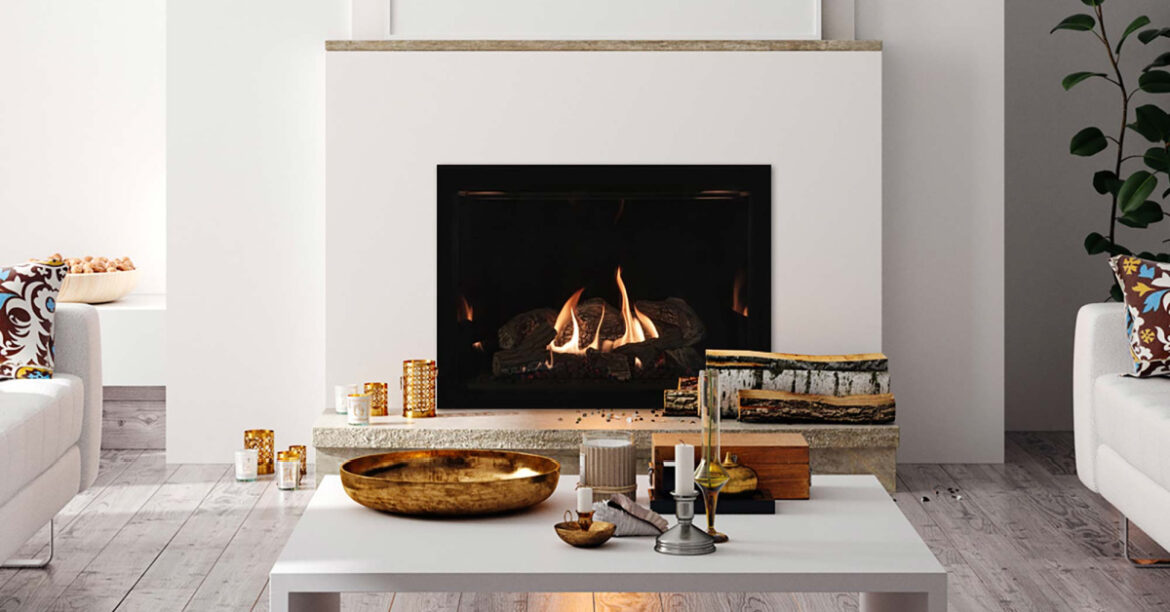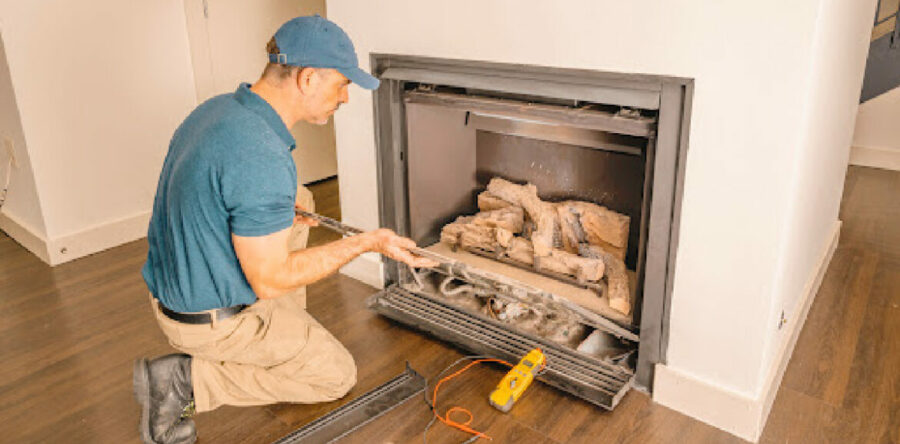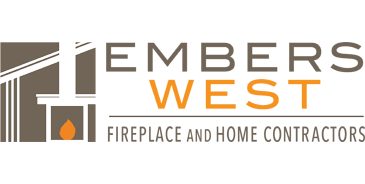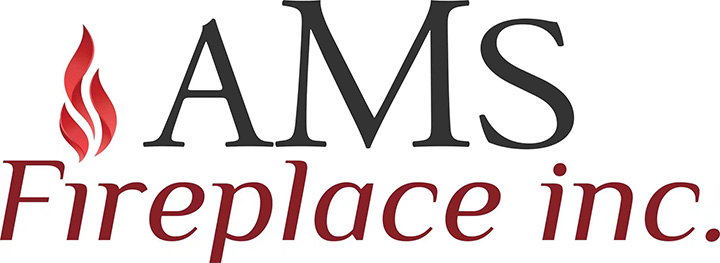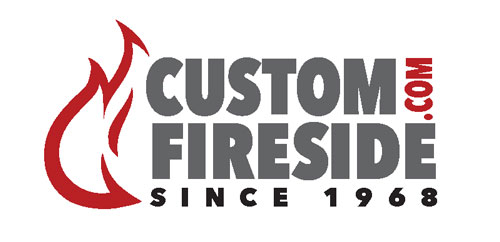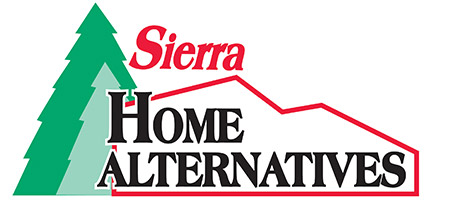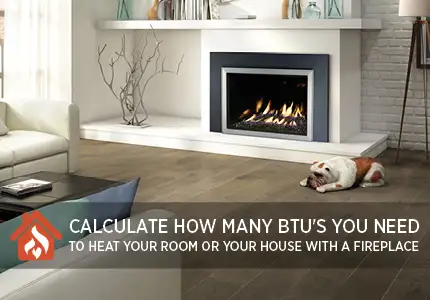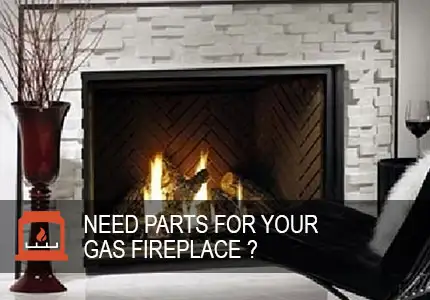Your gas fireplace is one of the most important amenities in your home. Gas fireplaces provide an amazing ambiance and wonderful warmth that everyone loves. And it seems obvious by all the family photos taken in front of it, your gas fireplace helps provide memories that will last a lifetime.
Here are several tips and suggestions that will help you use and maintain your gas fireplace correctly, as well as recognize common issues when it’s not operating as it should.
GAS FIREPLACE COMPONENTS:
First, let’s define the most common components of a gas fireplace. They include:
- Thermocouple: Small strips of metal that, when heated, will generate millivolts of electricity.
- Thermopile: Several thermocouples connected together that generate more electrical output than a single thermocouple. This provides the electricity needed to open the gas valve.
- Gas valve: This device allows gas to enter the burner.
- Gas burner: Mixes air and burns gas (natural or propane) to create realistic flames.
- Ignition system, IPI, or Standing Pilot: Ignites the gas, either with a pilot light or electronically once the valve is opened.
- Blower fan: Circulates air from the room through the fireplace’s convective heat chamber and pushes it back into the room.
- Ceramic glass front with safety screen.
- Firebox: The metal housing for the burner, logs, and flames.
- Logs or other media: Decorative material that enhances the flame presentation.
- Remote control, thermostat, or wall switch: Turn the unit on/off, adjusts the temperature and the fan.
CAN YOU MODIFY YOUR FIREPLACE?
Note that thermocouples and thermopiles are not interchangeable with each other. Thermocouples are generally interchangeable with other thermocouples. However, they come in different lengths. It’s important you have the correct length for your fireplace.
Thermopiles are about the diameter of a pencil and have wires coming out of the bottom that are routed to the gas valve terminals. Thermopiles are usually interchangeable with each other as well. However, we always recommend using original replacement parts.
Most logs are NOT universal or interchangeable. There are many fireplaces with different logs and other media options, such as fire stones or glass beads. However, logs must be placed in precise positions on the burner and are specific to the model of the fireplace. If logs break or show signs of wear, it’s best to replace them.
A gas fireplace can NEVER be modified to burn wood. This would be an extremely serious fireplace safety issue and not covered by your home insurance. On the other hand, a wood fireplace can be converted with a gas insert.
However, the firebox on a gas fireplace could be completely stripped of the gas supply line, the burner, and logs. Then, an electric insert could be installed. Electric inserts come in several sizes that could be safely installed into a gas fireplace. But never try to burn wood in anything other than a wood-burning fireplace, stove, or insert.
OPERATION OF A GAS FIREPLACE:
Gas fireplaces are turned on/off with a wall switch, remote control, or a wall thermostat. If the fireplace is being used as the primary heat, a thermostat on the wall or a remote control with a thermostat function might be a good choice. Instead of primary heat, my fireplace acts more as a supplemental heat source. So, I use a simple on/off remote control.
A gas fireplace is easy to light. When the thermostat calls for heat or the remote control or wall switch is pressed, the gas valve opens, and gas flows into the burner and is ignited by the pilot light. Fun fact: furnaces, boilers, and water heaters all work the same way.
No electricity in the house? No problem for starting the fireplace, provided the batteries in your IPI ignition system are fresh or, with a millivolt system, the pilot light is lit. Your fireplace will start up as usual and provide radiant heat through the glass front.
The blower fan on your gas fireplace will not operate when the power is out. Fans require house current to run. The burner will ignite, but the fan will not move any air.
Direct-vented gas fireplaces are sealed combustion units. This means that air for combustion purposes comes from outside. No air from inside the house is used for combustion. The “flue” or, more appropriately, the “direct vent co-axial pipe” can either be installed through a side wall or, vertically, through the roof.
COMMON GAS FIREPLACE TROUBLESHOOTING ISSUES:
Gas fireplace maintenance is important. It’s good practice to have gas fireplace components inspected once a year. Technicians can examine the gas valve and fittings electronically for any minute leaks, enhance the flames with ember material, and clean and inspect the glass and burner carefully.
There’s a special gas fireplace glass cleaner that’s used to routinely clean the glass front of your fireplace. It’s more of a polish, and it does a great job cleaning off the soot, condensation marks, and other particles from burning natural or L.P. gas. Don’t use a window cleaner. Buy the good stuff. It’s about $12 – $15 a bottle and will last you several years. Just follow the directions on the bottle.
Another cleaning detail: keep the fan compartment free of pet hair and dust. Just vacuum and/or dust this space periodically.
We all know that gas is nothing mess with, so anything other than cleaning the glass or replacing glass gasketing should be performed by an industry-certified professional. They have the “three E’s” critical for gas fireplace safety: the Equipment, the Experience, and the Expertise to adjust air-to-fuel settings, measure gas pressures, evaluate the venting system and more.
If the fireplace won’t turn on, doesn’t ignite, won’t stay lit, or is making an annoying beeping noise, it could be as simple as replacing the batteries in the receiver of your remote control. Or, it may be something a bit more complicated. Perhaps the thermopile or the circuit board needs to be evaluated.
INSTALLATION TIPS FOR SAFE AND ENJOYABLE USE:
A question that frequently comes up is, “Where should I install a gas fireplace?” There are several factors, but the first consideration should be the venting profile. If you’re planning a gas fireplace on an exterior wall or can run a vent pipe straight up through the roof of the house, It’s an easy decision.
If not, talk with an expert regarding the “profile” of the venting system before the project begins. There are specific limits and relationships between the “rise vs. run” of the vent pipe. That is, the overall height of the venting system and the horizontal distance the pipe can be installed.
Other points to think about for gas fireplace installations:
- Furniture placement
- Fire viewing angles
- Fireplace size
- Heat output
- On the floor vs. in the wall
Yes, WE LOVE FIRE® handles the full installation of gas fireplaces and also specializes in servicing and repairing the equipment. Feel free to reach out with any questions or for expert advice!
Common locations where gas fireplaces are installed include:
- Living rooms
- Family rooms
- Bedrooms
- Offices
- Kitchens
- Bathrooms
- Dining rooms
- Waiting rooms
- Lobbies
There are a lot of folks around today who claim to be experts in their fields. Because I’ve gooped some roofing tar on my roof, doesn’t make me a roofing expert. Just as extending an outlet in my garage doesn’t qualify me to re-wire your home.
Trust certified professionals with the regular maintenance of your gas fireplace to ensure installations, repairs, and servicing are done correctly and safely. Routinely maintaining your gas fireplace keeps it efficient. Detecting issues early often prevents costly repairs later.
Keep your family and property safe by having your gas fireplace properly installed and serviced regularly. Please contact us with any questions or comments regarding the use or maintenance of your gas fireplace.
